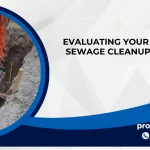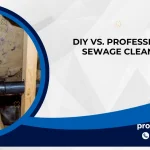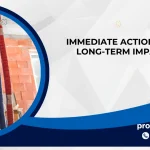Navigating After-Flood Recovery: Your Comprehensive Guide to Rebuilding After the Storm
Natural disasters have the power to reshape lives and landscapes, and few are as destructive as floods. From homes to businesses, the aftermath of a flood can leave a trail of devastation in its wake. However, armed with knowledge and a well-structured recovery plan, you can navigate the challenges of after-flood recovery and emerge stronger than before. This step-by-step guide is here to help you chart your course towards a successful recovery.

Step 1: Prioritize Safety
As floodwaters recede, your first priority is safety. Before re-entering your property, ensure that local authorities have given the all-clear. Watch out for hazards like downed power lines, unstable structures, and contaminated water.
Step 2: Contact Your Insurance Provider
Reach out to your insurance company promptly to report the damage and initiate the claims process. Provide detailed documentation, including photos and written descriptions of the damage, to expedite your claim.
Step 3: Assess the Extent of Damage
Thoroughly assess the damage to your property. Create a comprehensive list of damaged items and property, noting their approximate value. This inventory will prove invaluable when working with insurers and for tax purposes.
Step 4: Document, Document, Document
Before you start any cleanup or repairs, document the damage with photographs and videos. These visual records will serve as evidence for your insurance claim and provide insight into the true extent of the destruction.
Step 5: Prevent Further Damage
Take immediate steps to prevent additional damage. This might include covering damaged roofs, boarding up windows, and removing wet belongings to a dry area.
Step 6: Seek Professional Assistance
Depending on the scale of the damage, you might need professional help. Engage water damage restoration experts, electricians, plumbers, and contractors to assess and repair the damage accurately.
Step 7: Thorough Cleaning and Disinfection
Floodwaters can carry contaminants, so it’s crucial to thoroughly clean and disinfect all affected areas. Wear appropriate protective gear and use disinfectants recommended for flood cleanup.
Step 8: Determine Salvageable Items
Inspect your belongings and decide what can be salvaged and what must be discarded due to water damage. Keep safety in mind—some items might appear undamaged but could pose health risks due to mold and bacteria growth.
Step 9: Address Mold Concerns
Mold can flourish within 48 hours after a flood. Properly dry out your property using dehumidifiers, fans, and natural ventilation to prevent mold growth. Consult mold remediation professionals for severe cases.
Step 10: Begin Repairs and Reconstruction
With cleaning and drying complete, you can start the repair and reconstruction process. Focus on critical structural repairs before moving on to cosmetic enhancements. Keep detailed records of all expenses related to repairs.
Step 11: Stay Organized
Maintain a comprehensive record of all communication, receipts, and documents related to the flood and recovery efforts. This organized approach will facilitate insurance claims and any future legal requirements.
Step 12: Address Emotional Well-being
The emotional toll of flood recovery can be immense. Seek support from friends, family, or professionals to help you cope with the stress and emotions that accompany the rebuilding process.
Step 13: Prepare for Future Events
While you can’t predict or prevent natural disasters, you can take steps to minimize their impact. Consider flood-resistant building techniques, elevating utilities, and having a well-practiced emergency plan.
Conclusion:
Recovering from an after-flood is a journey that requires patience, perseverance, and a well-structured approach. Remember, you’re not alone—community resources, government agencies, and relief organizations can provide assistance during this challenging time. With the right plan and support, you can turn the tide on disaster and rebuild your life anew.
FAQ’S
1: How do I know it’s safe to return home after a flood?
Returning home after a flood should only be done when local authorities declare it safe. Listen to official updates and follow evacuation orders. Ensure that utilities, such as electricity and gas, are turned off until they can be inspected for safety. Be cautious of structural damage and contaminated water.
2: Will my homeowner’s insurance cover flood damage?
In most cases, standard homeowner’s insurance policies do not cover flood damage. You would need a separate flood insurance policy, typically offered through the National Flood Insurance Program (NFIP) or private insurers, to protect your home and belongings from flood-related losses.
3: How can I prevent mold growth after a flood?
Preventing mold growth after a flood involves thorough drying and cleaning. Ensure proper ventilation by using dehumidifiers, fans, and opening windows. Dispose of water-damaged items that cannot be thoroughly cleaned and dried. Consider consulting mold remediation professionals if you suspect extensive mold growth or have health concerns.




